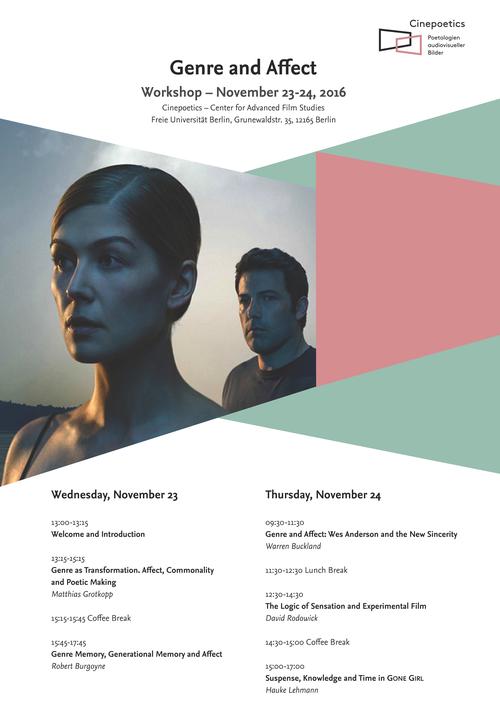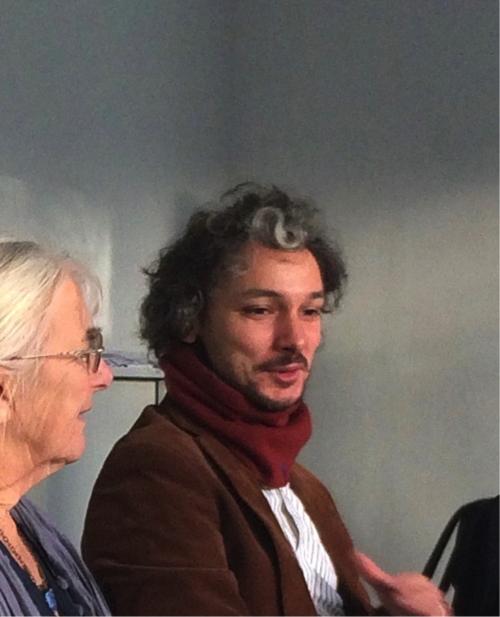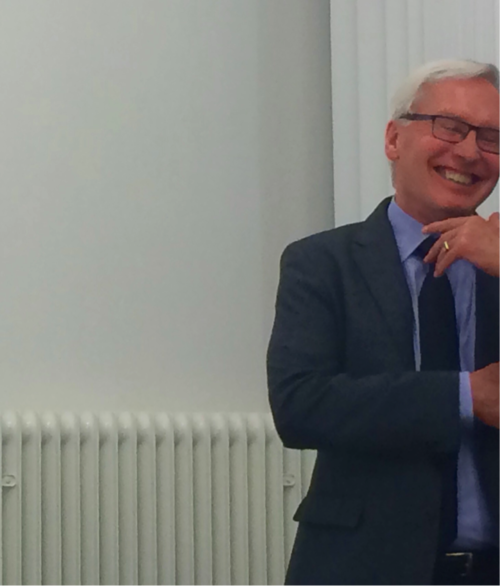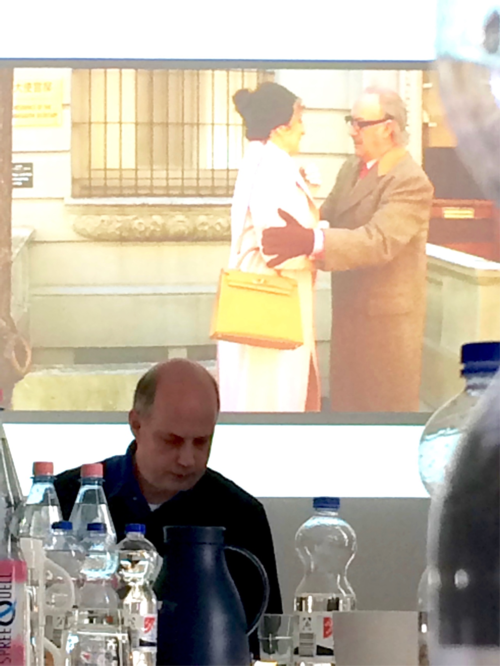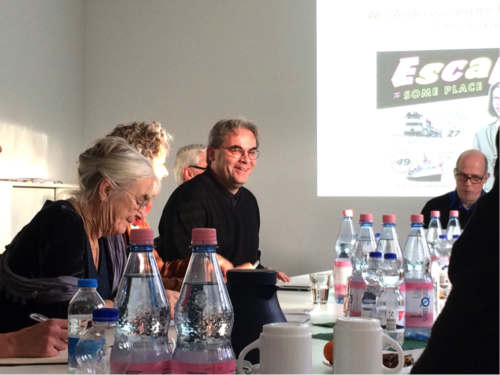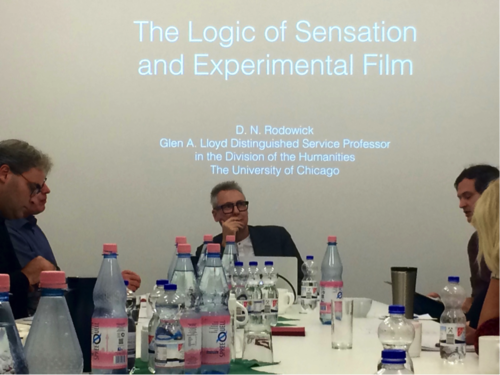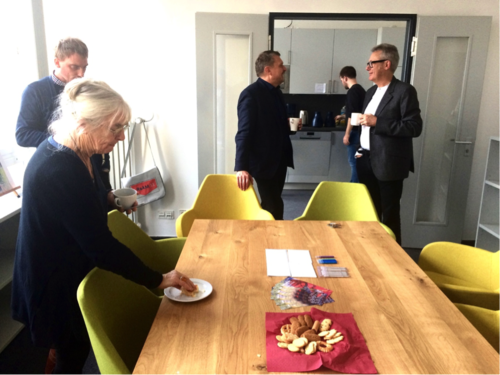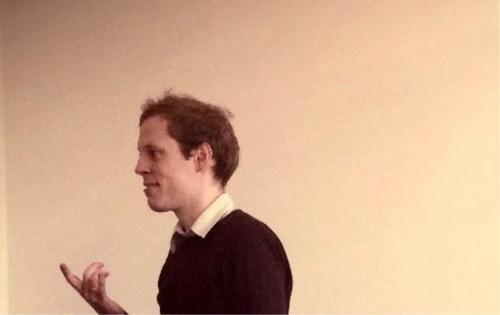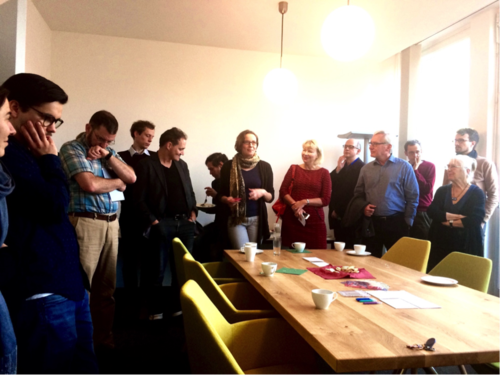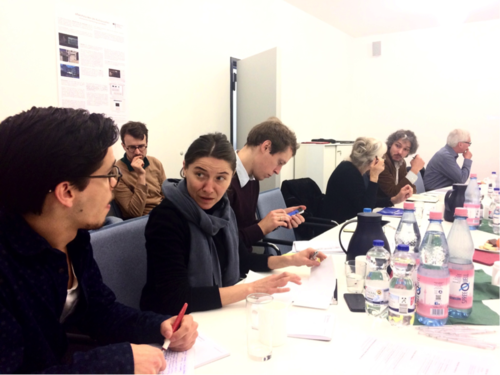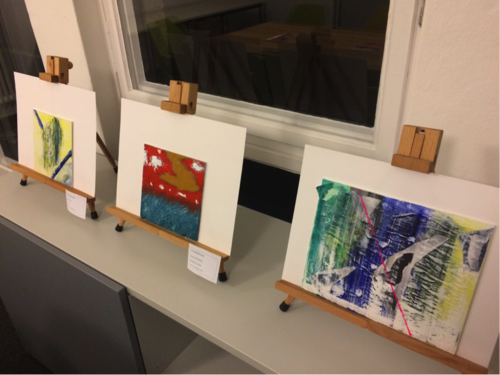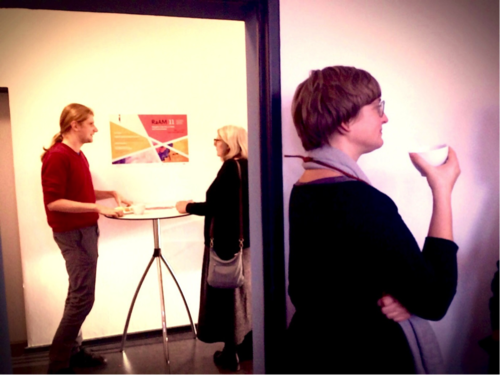Genre and Affect
23./24.11.2016 | Workshop der Kolleg-Forschungsgruppe Cinepoetics u.a. mit Robert Burgoyne, David Rodowick und Warren Buckland.
The workshop "Genre and Affect" brought together various theoretical and analytical perspectives on our current research focus. The two-day event featured presentations by Matthias Grotkopp (Freie Universität Berlin), Robert Burgoyne (University of St Andrews), Warren Buckland (Oxford Brookes University), David Rodowick (University of Chicago), and Hauke Lehmann (Freie Universität Berlin).
Matthias Grotkopp's presentation focused on genre and its relations to affect, commonality and poetic making. According to Grotkopp, genres create multiple shared perspectives on the world and can be understood as ways to create meaning. The production of affect in film is hereby a general concern in the work of Cinepoetics. If affect is defined as an experience of force, as the potential of bodies to impact each other, it is elementary for the interplay between modes of aesthetic experience and concrete audiovisual expressive modalities. In other words, affect is the dynamic intensity and temporality of aesthetic form in their capacity to create a coupling of media and feeling bodies (of the spectators). With reference to Stanley Cavell and the meaning of commonality, Grotkopp explained how genres also function as ways of inhabiting social roles, and, applying Michel de Certeau, how film consumption can already be seen as a productive process, as "poiesis" because it does not manifest itself through its own products but rather through the ways they are used.
Afterwards, Robert Burgoyne presented his research on "Genre Memory, Generational Memory, and Affect." In comparing scenes from Clint Eastwood’s films Flags of Our Fathers and Letters from Iwo Jima (both 2006), he showed how in war films "emotion and imagination are directly invoked as ways of knowing the past." For instance, they can elicit an imaginative proximity to history through gestures and movements of bodies as well as through film-specific language (such as panorama shots and close-ups). Both Eastwood films, he explained, feature sequences which generate a certain kind of affect that works "as a singular, cinematic mode of knowing the past."
Burgoyne proposed two theoretical bases for his argument. In recourse to Paul Ricoeur, he showed how films can close the distance between past and present through "direct address, sonic immersion, and overt appeals to emotion." In Ricoeur's theory, this closing is achieved through the critical mode of analogy that allows to establish a connection between past and present without losing the autonomy of each part. Secondly, Burgoyne reintroduced Mikhail Bakhtin's concept of genre memory that, as he argued, has been largely overseen in the discussion of film genres. Following Bakhtin, he described genres as "crystallized forms of social and cultural memory." A strong link between genre and history, the moment of reception can be regarded as a crystallized experience of sedimented history in genre form.
On the second day of the workshop, Warren Buckland talked about the notion of "new sincerity" and "storyworld" in the films of Wes Anderson. He began by introducing a three-part model of approaching films in terms of post-classical narratology: One can study the cognitive dimension of narrative structures, investigate the affective dimension of a narrative, or look at narrative worldmaking. Buckland then concentrated on the latter, describing storyworlds as ways of sense-making that emerge from a film's narrative and structure our everyday experience. According to Buckland, Anderson's storyworld can be divided into three levels: subsystem (individual codes, themes and values in each film), system (the storyworld as a unified universe of codes, themes and values partly manifest in each film), and supersystem (Anderson's transmedial storyworld which can be regarded as a "brand").
Christine Gledhill, Matthias Grotkopp, Michael Wedel, Robert Burgoyne, and Warren Buckland (from left to right)
Based on these assumptions, Buckland stated that we need to react affectively to a narrative in order to create a storyworld, and went into further detail about ways to engage emotionally with films: (1) through immediate evaluation of the film, (2) through identification with a character, (3) through appreciation of film form, (4) through self-modifying behaviour (a reference to David S. Miall and Don Kuiken's text, "A Feeling for Fiction"). It is especially the idea of self-modifying behaviour (e.g. the performative act of dressing up like characters from a Wes Anderson film) that is closely linked to the idea of storyworld. Expanding on affect with regard to film form, on the other hand, Buckland identified the dynamic relationship between sincerity and irony as a central affective dimension of Anderson's films—an affect he called "new sincerity." Here, sincerity undermines the cynicism and nihilism of irony, whereas irony, in turn, undermines the earnest, transparent statement of sincerity.
David Rodowick's talk concentrated on the logic of sensation and experimental film. He presented a Deleuzian approach in describing film as a world of becoming, a world beneath ordinary perceptual experience. One specific quote by Deleuze marked the starting point for Rodowick's paper: "When visible sensation confronts the invisible force that conditions it, sensation releases force as something that might destroy it…" This release of force into an image is what Rodowick defined as an "art of sensation"—something highly underrated in media culture, as, according to Rodowick, our cultural understanding of what cameras are still limits our understanding of what they do. Instead, he proposed a valuation of sensation beneath quotidian vision, of something that could be called "asubjective" or even "ahuman" perception.
Exemplifying this notion with his own experimental film, Waterloo, Rodowick demonstrated how, in recording a walk through a London subway station with his smart phone (and changing the camera's frame rate), an "affect without aim" came into being, and how such improvised acts could destruct figurations of everyday perception. A similar effect is achieved by Glider, a work by experimental filmmaker Ernie Gehr, in which the image space is constantly flattened, rotated, and distorted by forces.
Hauke Lehmann concluded with a presentation on suspense, imagination and time in David Fincher's Gone Girl. First, he explained that the relation of knowledge to time is central to suspense in cinema. Rather than just playing with the spectator's fear of the unknown, suspense suggests something far more radical: what is unknown, and what remains inherently unknowable, is not the future itself, but our arriving there, our affective encounter with it – not in spite, but in the very light of everything we may already know about what is going to happen.
Suspense, in turn, is not a matter of forecasting an outcome, but rather, as Lehmann argued, of negotiating for control over how we encounter the future. It refers not to what is represented in a given film, but to the very process of the film's temporal unfolding. As an "anamorphosis of cinematographic time" (Pascal Bonitzer), suspense combines two temporal perspectives that seem mutually exclusive: the "now" and the "not-yet". Thus, according to Lehmann, we need to have a certain perspective on time in order to perceive time. In this sense, the suspense established in Gone Girl manipulates our reaction to intimacy as a shifting of perspectives. The film's prologue can already be regarded as a "force-field of perspective," instituting a mode of suspense through which the viewer is displaced in time but not in space. Suspense is thus not about the simple dichotomy between knowledge and ignorance, but rather about the unknowable dimension of time as it is lived by us while watching a film. It is about transforming our way of relating to ourselves as perceiving subjects.
Participants of the workshop
Works featured in the exhibition
Thomas Scherer, Lynne Cameron, and Christina Schmitt (from left to right)
On the occasion of the workshop, a small exhibition of artworks by members of Cinepoetics was held. Initiated by senior fellow and artist-in-residence Lynne Cameron, a fluctuating group of about ten people meet for studio interludes, a break from the academic work to create artworks and talk about the connections between scholarly research and the making of art. Works by Regina Brückner, Thomas Scherer, Christina Schmitt, Ina Stoerrle, Michael Ufer, and Hannes Wesselkämper were shown and discussed in the lounge. In the preceding interludes these works of collage and déchirage emerged from a discussion of the relation between ferries and the sea in regard to their representation in maps and photography.
